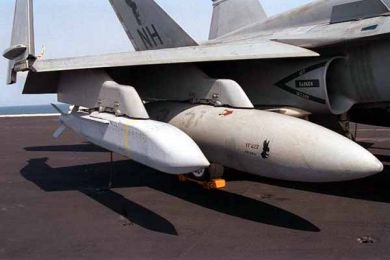JSOW C-1 combined with JSF gives warfighter a powerful new capability
DUBAI: Raytheon Company has completed a fit check of the Joint Standoff Weapon in the internal carriage bay of the Joint Strike Fighter aircraft.
“The capabilities of the JSF combined with JSOW C-1’s ability to precisely engage moving ships at sea from standoff ranges would give the U.S. and coalition warfighter a powerful capability,” said Cmdr. Samuel Hanaki, U.S. Navy JSOW deputy program manager.
During the fit check, Raytheon technicians loaded a JSOW shape in the JSF’s internal carriage bay and conducted a series of tests to prove the bay door could close properly without damaging the aircraft or the weapon.
“JSOW C-1 is the world’s first net-enabled standoff weapon that can engage a moving maritime target,” said Phyllis McEnroe, JSOW program director for Raytheon Missile Systems. “With its more than 110 kilometer range (68 statute miles) and tunnel defeat capability, JSOW C-1 will give members of the JSF a critical capability no other weapon can provide.”
About the Joint Standoff Weapon
- JSOW is a family of low-cost, air-to-ground weapons that employs an integrated GPS- inertial navigation system and terminal imaging infrared seeker, guiding the weapon to the target. JSOW C-1 adds moving maritime target capability and the two-way strike common weapon datalink to the combat-proven weapon.
- JSOW C-1 is the world’s first networked weapon, and has a range of more than 110 kilometers (60 nautical miles).
- The U.S. Navy completed the first free-flight test of JSOW C-1 on July 26, 2011.










